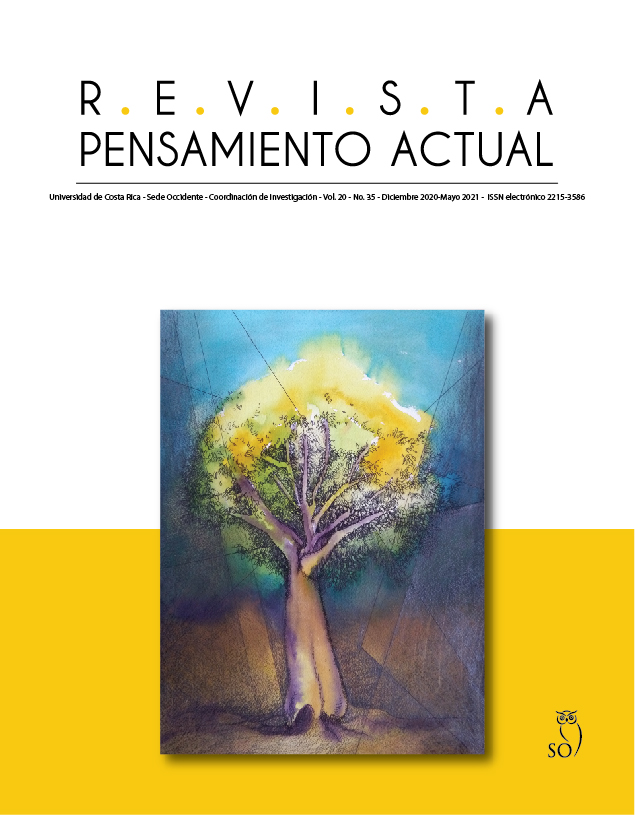Resumen
La presente reseña sistematiza las experiencias pedagógicas de dos docentes de
inglés que imparten cursos de aspectos suprasegmentales o prosódicos utilizando un
enfoque de registro lingüístico. Dicho enfoque propone que los elementos prosódicos
deben abordarse desde una perspectiva comunicativa, donde los actos del habla se
ajusten a las situaciones comunicativas específicas, con base en el nivel de
formalidad requerido (casual, informal, formal o fijo). En su mayoría, la propuesta
deriva de la experiencia empírica de los autores impartiendo cursos de pronunciación
en la Universidad Nacional, Costa Rica (UNA) y la Universidad de Costa Rica
(UCR) durante los últimos cuatro años.
Citas
Baker, A. (2011). Pronunciation Pedagogy: Second Language Teacher Cognition and Practice. ScholarWorks @ Georgia State University. http://scholarworks.gsu.edu/alesl_diss/16
Bakla, A. (2018). Learner-generated materials in a flipped pronunciation class: A sequential explanatory mixed-methods study, Computers & Education, 125, 14-38. https://doi.org/10.1016/j.compedu.2018.05.017.
Breitkreutz, J., Derwing, T., & Rossiter, M. (2001). Pronunciation Teaching Practices in Canada. TESL Canada Journal, 19(1), 51-61. https://doi.org/10.18806/tesl.v19i1.919
British Council. (n.d.). Connected. Speech. https://www.teachingenglish.org.uk/article/connected-speech
Celce-Murcia, M., Brinton, D., Goodwin, J. (1996). Teaching Pronunciation: A Reference for Teachers of English to Speakers of Other Languages. Cambridge: Cambridge University Press.
Cerezo, R., Calderón, V. & Romero, C. (2019). A holographic mobile-based application for practicing pronunciation of basic English vocabulary for Spanish speaking children, International Journal of Human-Computer Studies, 124, 13-25. https://doi.org/10.1016/j.ijhcs.2018.11.009
Creswell, J. W. (2007). Qualitative Inquiry and Research Design: Choosing Among Five Approaches (2nd edition). Sage Publications, Inc.
Dale, P., & Poms, L. (2005). English Pronunciation Made Simple. White Plains, NY: Longman.
Dauer, R. A. (1993). Accurate English: A Complete Course in Pronunciation. Englewood Cliffs: Prentice Hall Regents.
Dawood, A., & Atawneh, A. (2015). Assimilation of consonants in English and assimilation of the definite article in Arabic. American Research Journal of English and Literature, 1(4). 9-15.
Derwing, T. M., & Munro, M. J. (2015). Pronunciation Fundamentals: Evidence- based Perspectives for L2 Teaching and Research. Amsterdam: John Benjamins Publishing Company.
Gamboa, R., Chaves, L. Vásquez, L. M., & Gapper, S. E. (August 2019). Dilemmatic Conversations on the Teaching of Pronunciation. Round table conducted at the VI Congreso Internacional de Lingüística Aplicada, Universidad Nacional de Costa Rica, Heredia.
Gilbert, J. B. (2008). Chapter 2: The Prosody Pyramid. In Teaching Pronunciation: Using the Prosody Pyramid (pp. 10-20). New York: Cambridge University Press.
Gray, B. & Egbert, J. (2019). Register and register variation. Register Studies, 1(1), 1-9. https://doi.org/10.1075/rs.00001.edi
Jarosz, A. (2019). English Pronunciation in L2 Instruction. Second Language Learning and Teaching. doi:10.1007/978-3-030-13892-9.
Kralova, Z., Skorvagova, E., Tirpakova, A. & Markechova, D. Reducing student teachers' foreign language pronunciation anxiety through psycho-social training, System, 65, 49-60. https://doi.org/10.1016/j.system.2017.01.001
Murat, H. (2006). Current Perspectives on Pronunciation Learning and Teaching. Journal of Language and Linguistic Studies, 1, 2, 101-110.
Murphy, J. (Ed.). (2017). Teaching the Pronunciation of English. doi:10.3998/mpub.8307407
Orion, G. F. (1997). Pronouncing American English: Sounds, Stress, and Intonation. Boston: Heinle and Heinle Pub.
Saito, K. (in press) Advanced Segmental and Suprasegmental Acquisition. In P. Malovrh & A. Benati (Eds.). The Handbook of Advanced Proficiency in Second Language Acquisition. Wiley Blackwell.
Sevilla, H. (August, 2019). Pronunciation Fluency and Accuracy in ELT: A
Sociopragmatic Perspective. Paper presented at the VI Congreso Internacional de Lingüística Aplicada, Universidad Nacional de Costa Rica, Heredia.
Tudor, I. (2001). The Dynamics of the Language Classroom. Cambridge: Cambridge University Press.
Vásquez, L. M. (2020). Introduction to English Pronunciation. Universidad de Costa Rica, Sede de Occidente [unpublished manuscript].
Yoshida, M. (2014). Chapter 11: Intonation. In Understanding and Teaching the Pronunciation of English (pp. 123-131). Irvine: UC Irvine
Zoghbor, W. S. (2018). Teaching English pronunciation to multi-dialect first
language learners: The revival of the Lingua Franca Core (LFC), System,78, 1-14. https://doi.org/10.1016/j.system.2018.06.008

